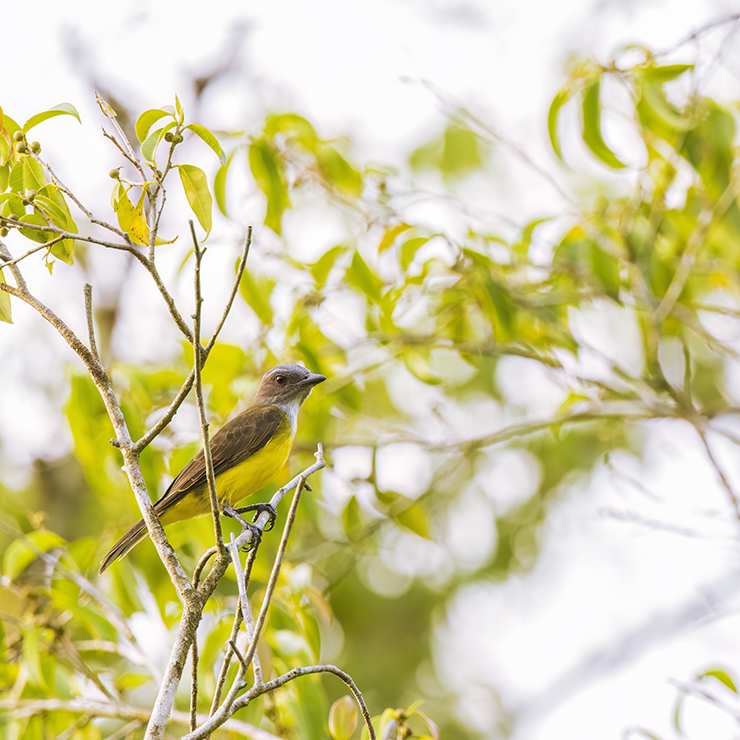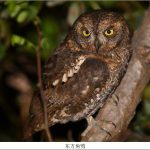
As mentioned in my previous post, we were hosted for an afternoon session at Jonathan‘s farm. Coming off a high from our morning boat ride, excitement was high as we pulled into the farm compound. Being relatively close to the city is a bit misleading, as this may lead one to think that the area is devoid of life – but let this be a gentle reminder that Guyana is 85% forested!
On the slow crawl into the farm, the first sighting was a small group of Green Ibis – a new species for me. Yes, there were House Wrens and Great Kiskadees, but I was expectedly excited to feast my eyes upon lifer after lifer. Most notably of which was a pair of Blood-colored Woodpeckers. Endemic to the Guianan shield, this species has captivated me since I first laid eyes on a photograph of it.

Blood-colored Woodpecker
Another sighting that got everyone running was of a Point-tailed Palmcreeper. In a palm tree, obviously. Not often observed on the farm, it was a lesson for all of us in that irrespective of how often a space is observed, there is always the potential of seeing something for the first time. The Point-tailed Palmcreeper is a strange bird in all senses. Observing it negotiate swaying and swishing palm fronds was akin to seeing a seal swim through a kelp forest. It was almost as if the bird was made for the tree.

Point-tailed Palmcreeper
Another bird I had seen many photos of and consequently really wanted to see was Black-capped Donacobius – a name which I embarrassingly would often mispronounce. This striking bird is a strange character and supposedly confused ornithologists for many years even though it was a common sight throughout marshes and open areas in much of South America. I could hardly imagine the frustration, initially it was thought to be a type of mockingbird. Today, we understand that its closest relatives are in fact Old World Warblers.

Black-capped Donacobius
Limpkins dotted the waterways in a concentration I hadn’t previously experienced. Furthermore, their famous shy nature was seemingly lost on these individuals. While they didn’t let me walk right up to them, they didn’t fly away from the moment we pulled in the parking lot. They foraged at the water’s edge while Wattled Jacanas squabbled on the floating vegetation and a White-throated Toucan called loudly from the treetops. A pair of Black-spotted Barbets preened in some high branches, and a trio of Blue-and-yellow Macaws flew past. The level of diversity in such a small space was unbelievable.

Can’t go wrong with large macaws: Blue-and-yellow Macaw

There were more than a couple Sulphury Flycatchers hunting among the vegetation – it was probably a decade since I had last laid eyes on one.

I had never before seen a Limpkin do this. It would hold its wing out as it walked. I honestly don’t understand the need to sneak up on a snail but then again what do I know, when I was little I had a pet turtle that ran away.

Finally, I was able to single out a Green Ibis for a photo.
Just as I had put my camera away, a medium-sized, dark raptor alighted on a distant tree. The light was already dismal, and we were preparing to leave – but this sighting required immediate action. Even a fleeting look at its sharply hooked bill would indicate that this was a bird that feasted on snails. But its piercing eyes were bright yellow! This was the first Slender-billed Kite I had ever seen, and what an unexpected treat it was. Also an uncommonly seen bird in Guyana, there is only a single record of this species on Trinidad – and that bird was only seen once.

A fitting conclusion to the first full day: Slender-billed Kite
If you’re so inclined to see the full list of species we saw and/or heard during our visit, please see Leon’s eBird list here. The next day, we would journey into the famed interior of the country. The true Guyana, as many have termed it.











Leave a Comment